I got pulled into a Twitter exchange with a self-proclaimed science writer called Spencer (@Unpop_Science), who was ranting about “abysmal ecological education in Western society. His rant contained the tweet:
Ecology challenges the Abrahamic religions of the West, which mythologize human supremacy over the vast, complex Universe our species inhabits. It’s no coincidence that Western history’s most persecuted scientists are Galileo & Darwin — whose theories challenged human supremacy.
One of my Twitter followers, not surprisingly, asked me about Darwin being persecuted!?
Darwin was of course not persecuted but I couldn’t resist tweeting the following:
Excuse me for asking, but in what way did Galileo’s theories challenge human supremacy?
Mr ScienceWriter: They disproved the myth that the Universe revolves around us.
Me: Go away and learn some history of cosmology, that was never the belief of people before the acceptance of heliocentricity. Also, Galileo proved absolutely nothing in this context.
You are repeating a myth created in the late 18th earth 19th centuries by people such as Goethe and Kant that in the geometric cosmos humanity was in the exalted position, at the centre. For the real picture read this
And I linked to this quote on my blog:
CHAPTER 7
OBJECTIONS OF THE ASTRONOMERS AND NATURAL PHILOSOPHERS TO THE COPERNICAN SYSTEM
Since, however, almost everyone has been of the conviction that the earth is immobile since it is a heavy body, the dregs, as it were, of the universe and for this reason situated in the middle or the lowest region of the heaven…
Otto von Guericke; The New (So-Called) Magdeburg Experiments of Otto von Guericke, trans. with pref. by Margaret Glover Foley Ames. Kluwer Academic Publishers, Dordrecht/Boston/London, 1994, pp 15 – 16. (my emphasis)
Mr ScienceWriter: That’s it? Your own blog with one quote saying Earth is “the lowest region of the heaven”? What an amazingly lazy attempt to revise history.
Me: Not revising history that was the standard view in the Early Modern Period. You are the person who very obviously doesn’t know any history.
After his last tweet above Mr ScienceWriter linked to the webpage A Brief History, which is part of the website What is the Ultimate Fate of the Universe? Created by Molly Read of the Observational Cosmology Group at the University of Wisconsin-Madison.
Let us examine what a cosmologist, not a historian, has to tell us about the history of 2000 years of cosmology in a couple of hundred words. But before I do let us re-examine how we got here. I, for my sins, a professional historian of science, who specialises in the history of the mathematical sciences in the Early Modern Period, which of course includes the histories of astronomy and cosmology presented Mr ScienceWriter with a referenced quote from a leading seventeenth-century scholar that explains in plain terms that the people in this period didn’t think that the universe revolves around them but rather thought they lived in the garbage pit. Mr ScienceWriter, apparently an ecologist sneered because the quote was presented on my blog and cancelled me with, “What an amazingly lazy attempt to revise history.” As a counter he links to a webpage (is a webpage somehow superior to a blog?), where a cosmologist, not a historian, presents an incredibly brief history of two thousand years of cosmology without any sources, references and this is supposed to represent the “real” history!
Since early times, man has been fascinated with discovering the origins of the cosmos. Similarly, man has often been influenced by his creationist ideas: that some divine power created the universe and everything in it. For example, the Ancient Greeks developed some of the earliest recorded theories of the origin of the universe. Unfortunately, many of these Greek philosophers and astronomers placed the Earth in the center of their models of the universe. They thought, if the heavens are divine, and the gods created man, well then certainly the universe must be geocentric, meaning the Earth is the center of the universe.
The argument presented here as to why all early models of the cosmos are geocentric is so bizarre it hurts. I don’t know how oft I have repeated this over the years, but we live in a geocentric world. A couple of simple thought experiments. Imagine standing on a plane with a distant horizon in every direction. There can be mountains, hills, forests, or even an open stretch of water on the horizon in any particular direction. Now imagine rotating on your own axis through 360 degrees, stopping, then rotating back through 360 degrees. Everything you perceive whilst you turn has you at the centre, it’s a fact of life. Your perception is “youcentric” by definition.
Now we turn to cosmology. Go out at night somewhere in the middle of the country, where there is no light pollution and lay down on you back in the middle of a meadow and observe the night sky. If you lie there long enough, you will see the night sky revolving over your head. If you lie there for many nights, you will see a steady change in the night sky. Do this for many years and you will recognise repeating patterns in the changes in the night sky. This is how astronomy and cosmology were both born and because the observer was per definition is at the centre of the observations the picture of the perceptible cosmos that the observer develops is by necessity geocentric. It is virtually impossible for anybody to perceive the cosmos as anything else. This is what makes thinkers like Aristarchus of Samos or Copernicus so unique in human history. It’s thinking outside of the box with a vengeance.
One should also not forget that whereas everything observable in the heavens appears to move that platform from which our observer is making their observations, the Earth, shows no signs of moving in anyway whatsoever. Providing empirical proof that the Earth moves proved incredibly difficult. Such a proof that the Earth orbits the Sun was first delivered by Bradley’s discovery of stella aberration in 1725 (published 1728) that’s 182 years after the publication of Copernicus’ De revolutionibus! We had to wait until 1851, that’s 308 years after the publication of De revolutionibus, before we had an empirical proof of diurnal rotation!
Ancient societies were obsessed with the idea that God must have placed humans at the center of the cosmos (a way of referring to the universe).
Those pioneering astronomers were far from thinking that they were supreme, as Mr ScienceWriter would have us believe. In almost all of those early cultures that developed astronomy, when they discovered the planets, they thought they were gods. We still use the Roman gods’ names for the planets today. Those humans considered themselves to be at the mercy of the capriciousness of those, anything but friendly, gods, who controlled their fate, having dumped them on the hostile Earth, while they, the gods, reigned supreme in the heavens.
An astronomer named Eudoxus created the first model of a geocentric universe around 380 B.C. Eudoxus designed his model of the universe as a series of cosmic spheres containing the stars, the sun, and the moon all built around the Earth at its center. Unfortunately, as the Greeks continued to explore the motion of the sun, the moon, and the other planets, it became increasingly apparent that their geocentric models could not accurately nor easily predict the motion of the other planets.
Eudoxus (c. 400–c. 350 BCE) did not create the first model of a geocentric universe. He did not even create the first Greek, model of a geocentric universe. Maybe our cosmologist meant to say that Eudoxus created the first mathematical (speak geometrical) model of a geocentric universe but even that wouldn’t be true. At best we can say that Eudoxus created the first Greek, mathematical, model of a geocentric universe, there were earlier Babylonian mathematical models, which were however based on algebraic algorithms, not geometry. The Greek’s were aware of this having acquired much of their astronomical data from the Babylonians.
The various Greek geocentric models might have been complicated but they were surprisingly accurate in their ability to track the movement of the celestial bodies. Our cosmologist now delivers a standard explanation of the phenomenon of retrograde planetary motion, which closes with a snarky comment.
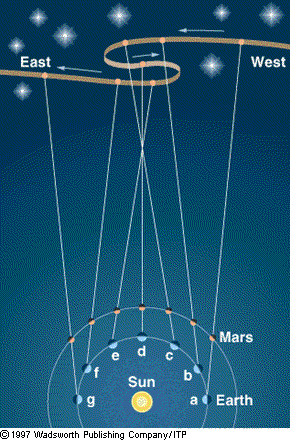
Take the apparent motion of Mars from an observer on the Earth, for example. As the Earth and Mars orbit around the sun, Mars appears to advance forwards, and then stop and start moving backwards, and then stop and change direction once again to start moving forwards (shown in the picture at left). You can see in the picture that this phenomenon is easily explained by a heliocentric universe (“heliocentric” meaning the sun is the center of the universe), but imagine being an ancient Greek and trying to understand why Mars would follow such an unusual orbit (when, according to them, it was supposed to have a circular orbit) if the Earth was the center of the universe!
Although the apparent motion of the planets contradicted the philosophical axioms of Ancient Greek cosmology, the astronomers did succeed in producing ingenious, functional models of that described fairly accurately that errant planetary behaviour. Our cosmologist nowhere explains the ingenious method that Eudoxus developed to solve this apparent contradiction, he system of nested homocentric spheres. She links to a diagram of part of Eudoxus’ system without any explanation of what it is and how it works.
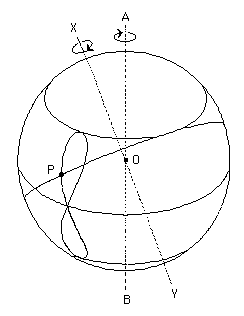
After Aristotle developed a more intricate geocentric model (which was later refined by Ptolemy), general cosmology clung to these misconstrued ideas for the next 2,000 years.
We now spring direct to Aristotle, what no Callipus (c. 370–c. 300 BCE)? If you are going to talk about the nested homocentric spheres model developed by Eudoxus, then you should mention the improvement made by Callipus before moving on to the improvements made by Aristotle (382–322 BCE). Having completely ignored Apollonius (c. 240–c. 190 BCE) and Hipparchus (c. 190–c. 120 BCE), our cosmologist now jumps the shark stating, “which was later refined by Ptolemy,” the Eudoxian/Aristotelian system of homocentric spheres is completely different to the deferent/epicycle models developed by Ptolemy (c. 100–c. 170 CE). The two systems where contradictory and their supporters competed with each other over the next fourteen centuries.
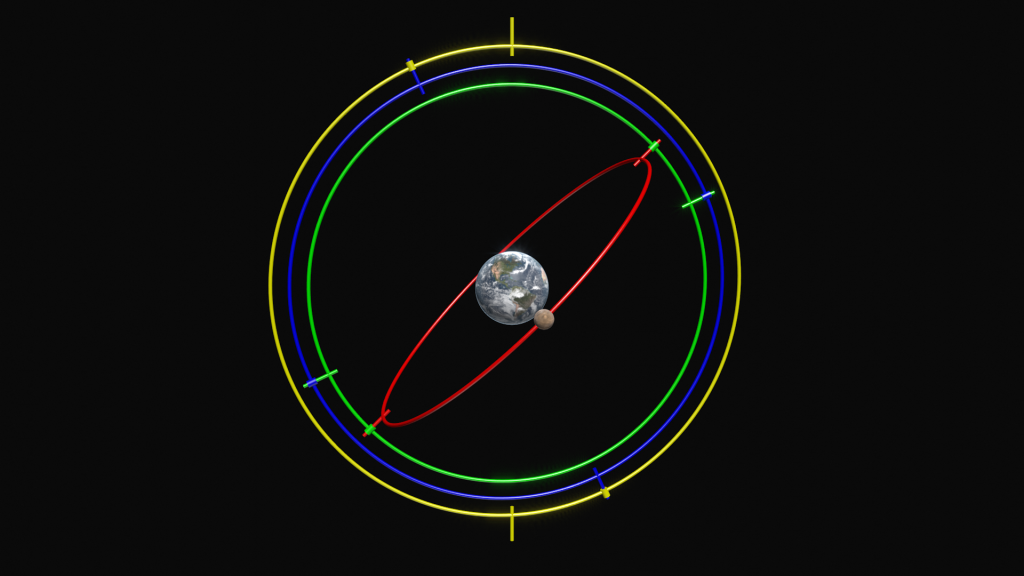
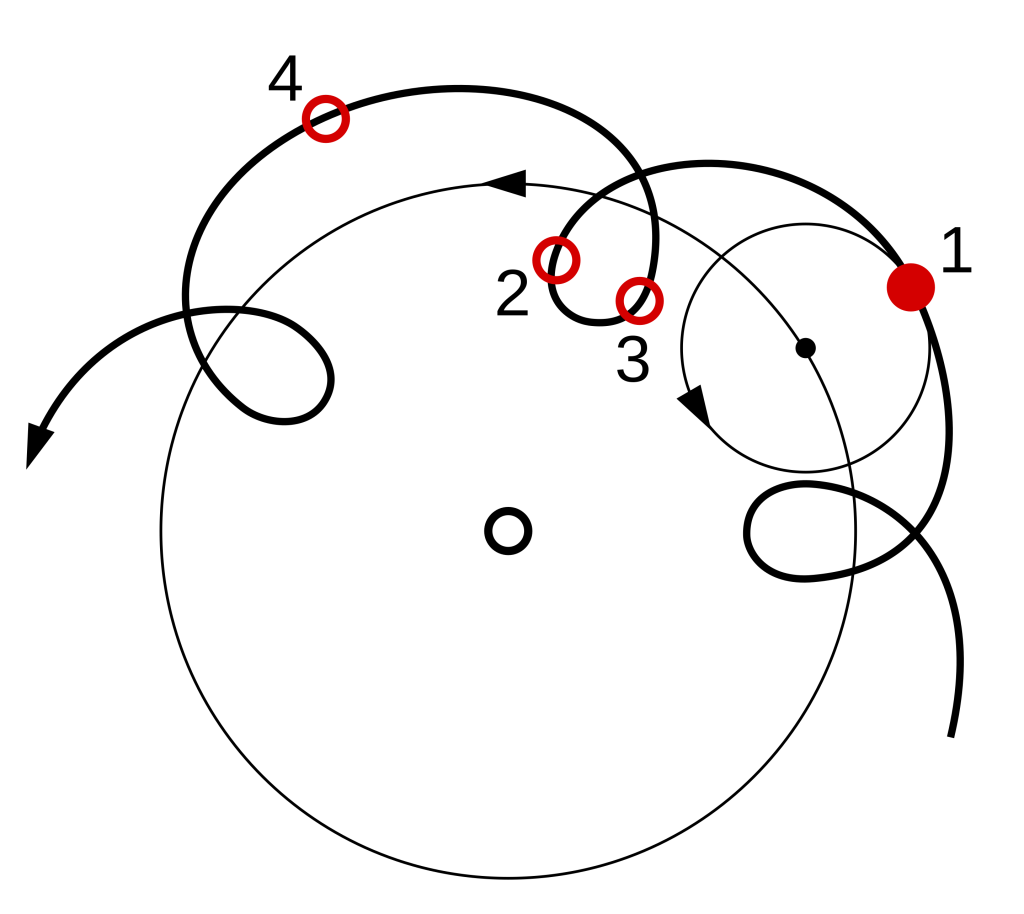
Our cosmologist completely ignores the discussions, challenges, criticisms, and improvements made to the geocentric astronomical models, first in late antiquity, then by Islamic astronomer, and finally by medieval European astronomers, during those fourteen centuries before Copernicus emerged with his heliocentric model. She also completely ignores the geoheliocentric model first discussed by Martianus Capella (fl. c. 410), in which Venus and Mercury orbited the Sun which in turn orbited the Earth with the other planets,
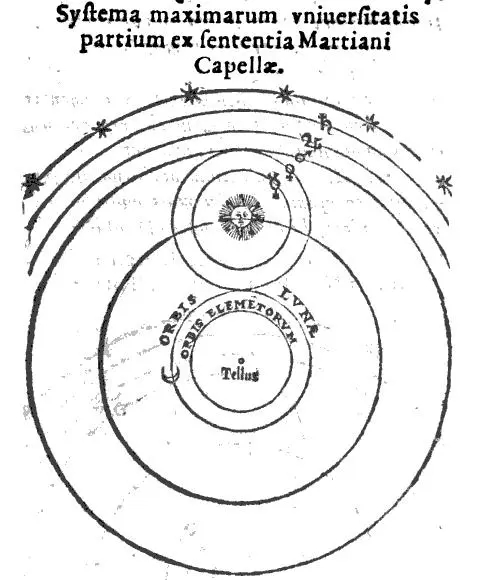
as well as the geocentric model with diurnal rotation first proposed by Heraclides Ponticus (c. 390–c. 310 BCE). Both of these models were well-known and much discussed throughout the Middle Ages and are important developments in the direction of a heliocentric system. Calling those models misconstrued ideas displays an incredible ignorance on the part of our cosmologist. They are rational attempts to model the empirical evidence available to the senses at the time.
We then get the classic piece of bullshit ignorance:
Even when Nicholas Copernicus, introduced the notion of a heliocentric universe, many contemporary societies greatly influenced by religious beliefs refused to accept it.
That a professional academic from a large, public American university is writing crap like this in the twenty-first century beggars belief. Professional astronomers in the second half of the sixteenth century and the first half of the seventeenth didn’t accept a heliocentric model of the cosmos because there was no empirical evidence to support a moving Earth theory. As already noted above the necessary empirical evidence was first delivered 182 years, orbit around the Sun, and 308 years, diurnal rotation, after the publication of Copernicus’ De revolutionibus! Around the end of the first decade of the seventeenth century there were at least nine models of the cosmos vying for attention–Ptolemaic geocentric with or without diurnal rotation, Aristotelian homocentric, Capellan with or without diurnal rotation, Tychonic with or without diurnal rotation, Copernican heliocentric, Keplerian heliocentric and yes, the Copernican and Keplerian systems were regarded as rivals.
Someone might ask why all the details, isn’t a simplified version of the history as presented by here by our cosmologist enough? The answer is a categorical no. The highly simplified and factually inaccurate version presented here is a falsification and corruption of the actually historical evolution of astronomy and cosmology over a period of more than two thousand years, which leads to statements such as “the Ptolemaic model of the cosmos ruled uncontested for 1400 years until Nicholas Copernicus challenged it.” Over the years I have stumbled across many variants of this historically incorrect statement. In reality from well before Eudoxus developed his geometrical model of the cosmos, cosmology and astronomy evolved in the constant ebb and flow of an intensive and complex philosophical and scientific debate. As I have explained in the past, Copernicus’ contribution was made during a period when that debate was, for various reasons, raging particularly strongly.
Turning back to the original debate on Twitter that led to all of this, I will give a hopefully brief account of the real perception of humanities place and status in the cosmos at the time Galileo made his contributions to the ongoing debate. The primary model of the cosmos in Europe in the High Middle Ages and going on into the Renaissance, that is the one Galileo would have been acquainted with when he first became interested in astronomy, was a mixture of Aristotelian cosmology, Ptolemaic astronomy, and Catholic theology. There were variations and alternatives, as I have outlined above, but they don’t need to concern us here. The philosophical picture was determined by the Aristotelian cosmology, and Catholic theology, the Ptolemaic astronomy being regarded as purely an instrumental device to determine astronomical data for astrology, computus, that is calculating the movable church feast days, ect.
Aristotle’s cosmology divided the cosmos into two, everything above the moons orbit, the supralunar sphere, and everything under the moons orbit, the sublunar sphere. Everything in the supralunar sphere, that is the heavens, consisting of the so called fifth element, quintessence or aether, was perfect, unchanging, eternal, and incorruptible. Everything in the sublunar sphere, that is the Earth and its atmosphere, was made of the four elements–earth, water, air, fire–was subject to change, decay, and corruption. There were initially seven heavens, corresponding to the orbits of the seven planets–Moon, Mercury, Venus, Sun, Mars, Jupiter, Saturn–a concept that predated Christianity. Each of these orbits was encased in a celestial sphere. Outside of the orbit of Saturn was the eighth sphere of the fixed stars. Over time a nineth and tenth spheres were added for mechanical reason. All of these spheres or heavens rotate, the nineth or tenth, depending on model, model the Primum Mobile providing the driving force for the whole construction. In the Catholic theology, outside of the tenth sphere was a sphere that did not rotate, the Empyrean, the abode of God.
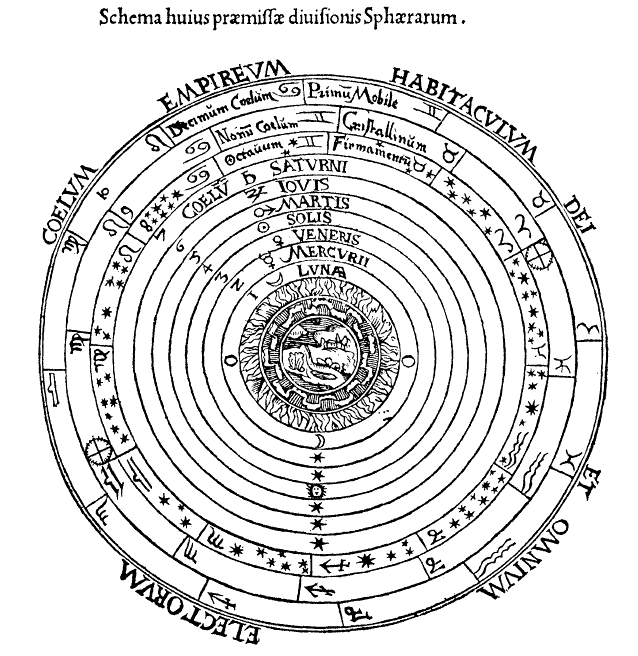
Here it is obvious that the central point is the Empyrean, the abode of God, and in importance one either ascend into the heavens to God, or descend to the corrupt and sinful Earth, or even deeper into the pits of hell beneath the Earth. It is very clear in this concept there is no human supremacy but as Otto von Guericke put it so succinctly, the Earth is the dregs… or the lowest region of the cosmos. Cicero in his Dream of Scipio describes an ascent through the celestial spheres, “compared to which the Earth and “Scipio now noticed that the stars were globes which easily outstripped to earth in size. Indeed the earth now appeared so small in comparison that the Roman Empire, which was hardly more than a point on that tiny surface, excited his contempt.” Macrobius in his commentary to Cicero’s work strengthened this image and spread it through the Middle Ages.
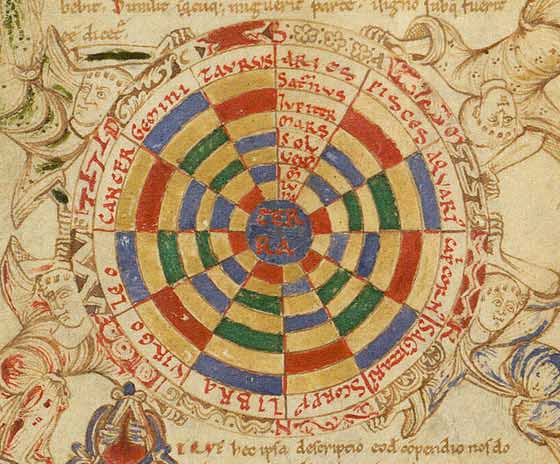
In the Paradiso, in Dante’s Divine Comedy the image of ascending away from the corrupt Earth into the perfect Empyrean is the central theme of his narrative.
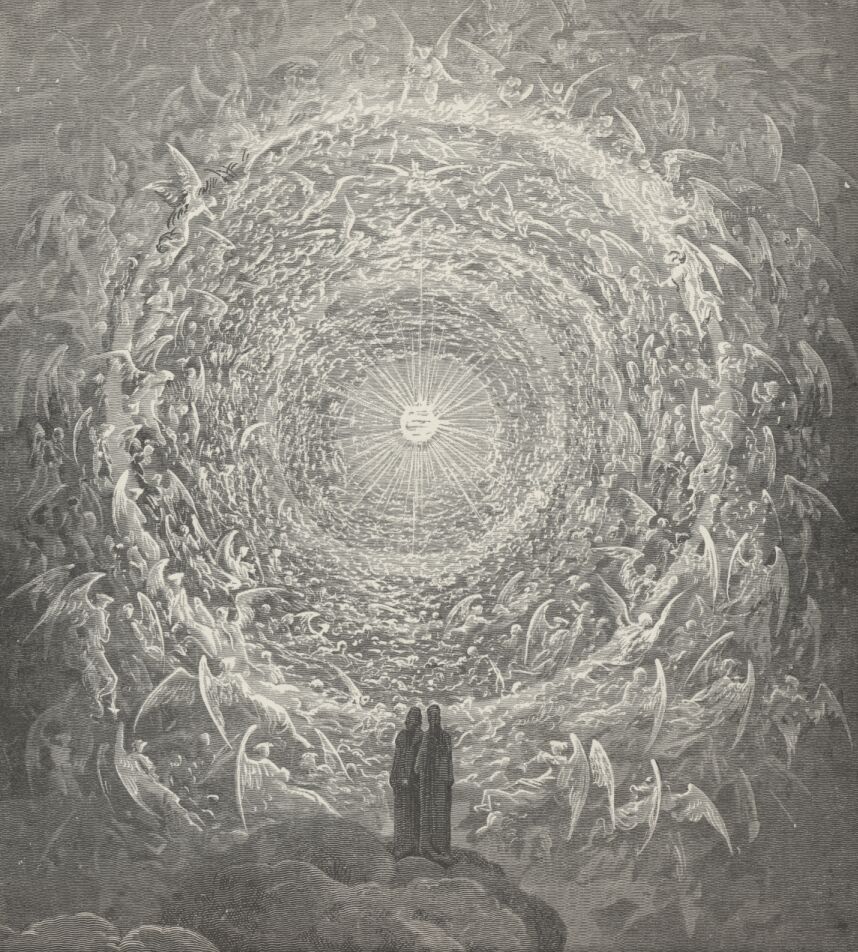
A final example comes from the work of the highly influential medieval French philosopher, astronomer, physicist, and theologian Nicole Oresme (c.1320–1382). In his Le livre du Ciel et du Monde, a translation of and commentary on Aristotle’s De caelo produced for his patron, Charles V, the illustration of the spheres is in the conventional order but they are curved concave upwards, centred on God, rather than concave downwards, centred on the Earth.
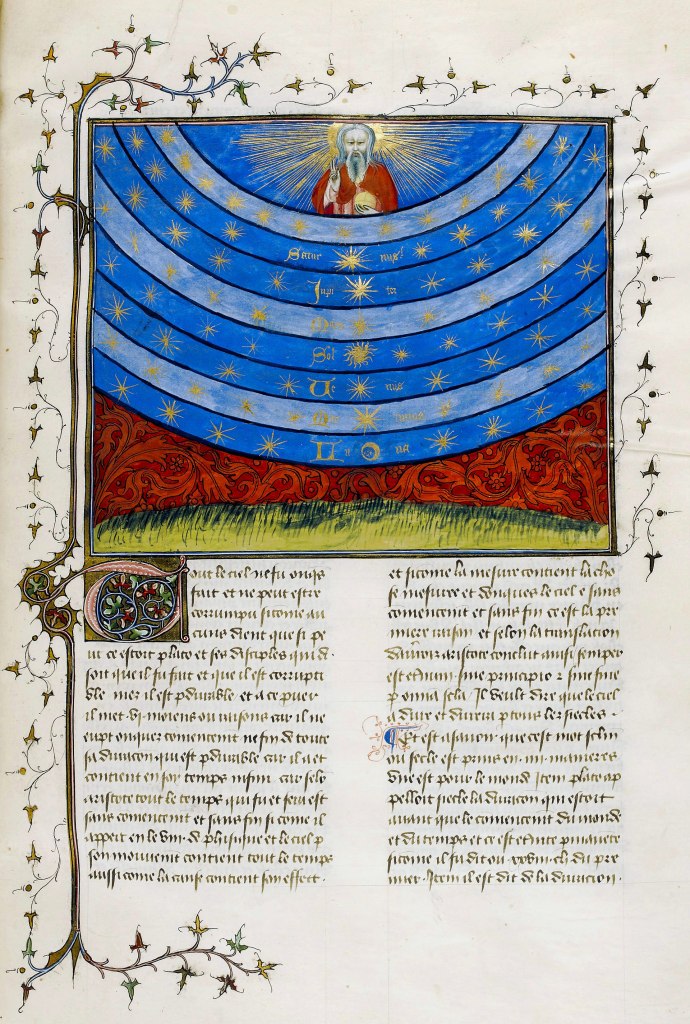
In my initial Twitter exchange with Mr ScienceWriter, I asked him “in what way did Galileo’s theories challenge human supremacy?” He answered, “They disproved the myth that the Universe revolves around us.” I later then asked him what exactly Galileo proved, a question that he failed to answer. It is obvious that he suffers from the, unfortunately, very widespread illusion that Galileo somehow proved the validity of the heliocentric system. Regular readers of this blog will know that he did nothing of the sort. As a historian of science, I find it sad that somebody, who claims to be scientifically knowledgeable, spread falsehoods and myths to his 11,6K followers on Twitter and when challenged persists that they are right and their critics are wrong, instead of checking their claims. I also find it depressing that a large American university posts on their official website an article on the history of astronomy and cosmology written by a non-historian, who very clearly doesn’t know what they are talking about.